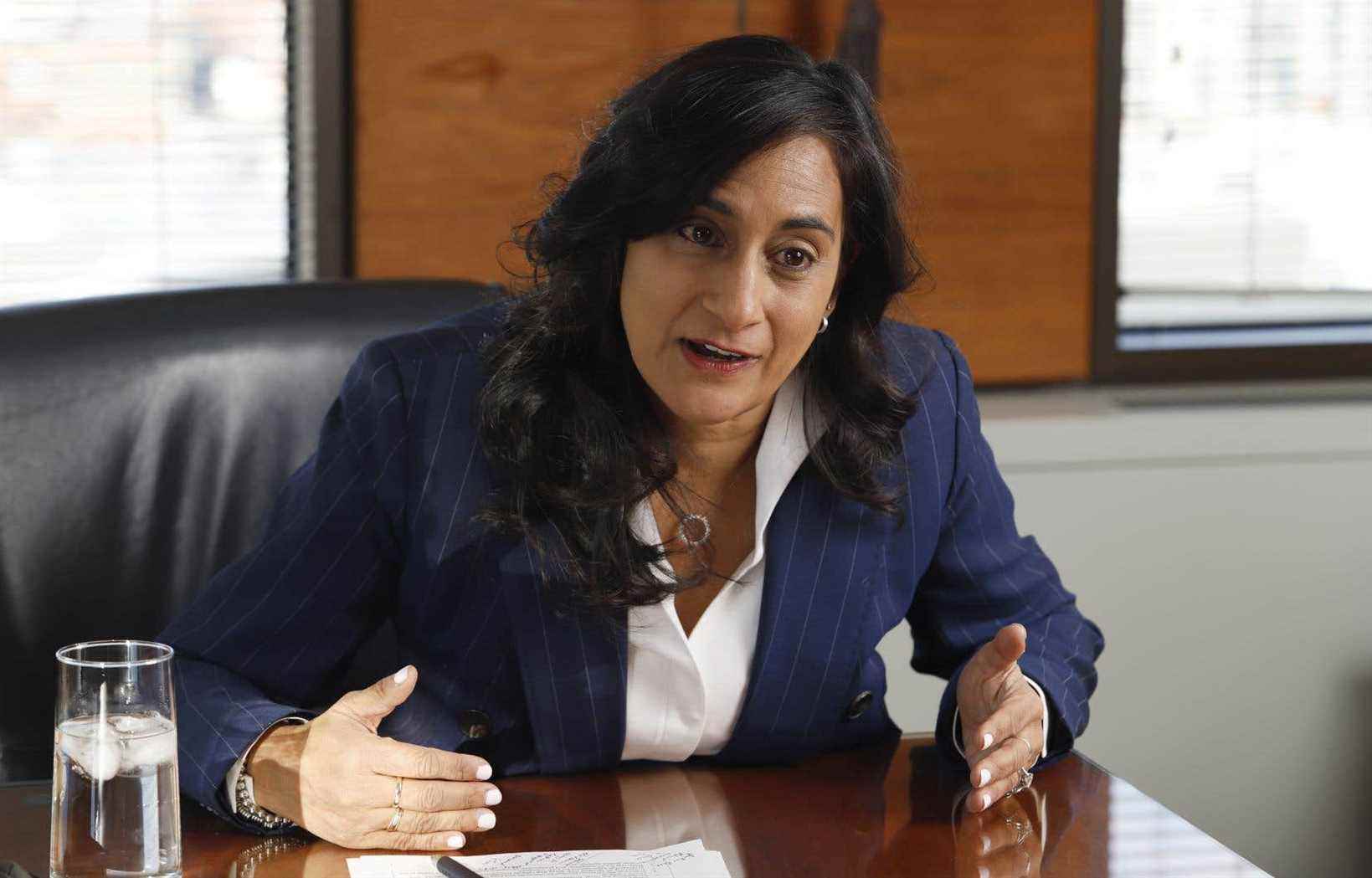The fog of war is thickening along the border between Russia and Ukraine. The Canadian Armed Forces will not get lost, assures the Minister of National Defense, Anita Anand, in an interview with The duty.
She says she has “plans for all eventualities” in hand, including one where the Russian “aggressor” would sound the charge against Ukraine. “But, I’m not going to comment on contingency plans. It wouldn’t be safe to do so. As minister, I have to make sure that our armed forces can work in safety,” she said, while emphasizing that the 200 Canadian soldiers currently dispersed on Ukrainian territory “are only there to provide training.”
Pointing to the “current threats from Russia” and the “risk of armed conflict”, the Canadian government on Monday asked its nationals present in Ukraine to “leave using the commercial options currently available”.
Do these same “current threats from Russia” convince him to ship weapons and ammunition, even soldiers to Ukraine, even though the Eastern European state is not a member of the United Nations? North Atlantic Treaty (NATO)? “All options remain on the table,” replies Anita Anand, reiterating Canada’s call on Russia to favor “a diplomatic solution” to the Ukrainian crisis rather than keeping 130,000 soldiers nearby.
The Canadian minister says she wants to discuss “all options” not only with the Cabinet – which is divided on the prospect of sending small arms to the Ukrainian army, according to The Globe and Mail —, but also with the Chief of Staff, Wayne Eyre, and the Deputy Minister of National Defence, Bill Matthews. Anita Anand was committed to this, in particular with her Ukrainian counterpart, Oleksiy Reznikov, with whom she had a “long discussion” less than 10 days ago.
To date, Ottawa has extended the Ukrainian military training and capacity building mission (Operation Unify) until March 2025, in addition to having dispatched to Ukraine a C-177 Globemaster aircraft loaded with non-lethal military equipment, namely body armor, load carrying tools, binoculars, laser range finders , metal detectors and spotting scopes.
According to the Minister, “training” is “at this time” the “best way for Canada to help” Ukraine and its allies. “We have already trained more than 30,000 Ukrainian soldiers. That is very important for Canada, for Ukraine and for NATO,” argues Anita Anand, returning from a mission that took her to Ukraine, but also to Latvia — a Baltic country member of the NATO where Canada has 500 soldiers (Operation Reinsurance) — as well as at NATO Headquarters in Belgium. But the Liberal government is under pressure here at home from observers calling on it to do more, including the Ukrainian Canadian Congress.
Above all, Anita Anand considers it essential to defend the “rules-based international order” against possible attacks from Russia. “It may seem abstract to people, but it’s really important to us, so that our children don’t have to fight and die like [des] generations [avant la leur]. When I was a student at Queen’s University, I studied political science and realized that there is something called the rules-based international order. Now I can work for [le] protect,” says the 55-year-old.
Russian shows of force
Russia is also making provocative gestures outside of Eastern Europe. It carried out sporadic air and sea operations outside its borders – “close to Ireland, for example”, notes Anita Anand. In 2021, the North American Aerospace Defense Command spotted Tupolevs more than once in the Alaska Air Defense Identification Zone.
The Minister of National Defense says she is on the lookout “every day, to protect Canada” against intrusions by aircraft flying near its airspace. “For me, the sovereignty of the Arctic, the protection of our continent, is very important, not only for Canada, but also for global security,” she explains to the Duty.
To strengthen continental security, the Prime Minister, Justin Trudeau, asked him to notably “deploy new technological solutions to improve the surveillance and control of northern and maritime approaches” and to “modernize the command and control systems […] to deter and defeat aerospace threats to North America”.
In addition, the Canadian Center for Cyber Security reported in its latest bulletin, published last month, “foreign cyber threat activities, in particular carried out by Russian-sponsored perpetrators”, which target “operators of critical infrastructure networks of the Canada”.
Efficiency model
After her leap into politics and her accession to Cabinet in 2019, Anita Anand distinguished herself by her efficiency in getting her hands on millions of doses of vaccine against COVID-19.
After the election last summer, the former university professor did not wait for the Prime Minister’s call to draw up “a list of things to do” at the Ministry of National Defence. “I have heard rumors in the media that I could be appointed to this position. I really like to plan. I don’t do anything without having a plan. So I immediately started writing down a to-do list just in case,” she tells the Duty. “The first point was to work to build an army where everyone feels safe, protected and respected. »
Anita Anand took command of the Department of National Defense on October 26, when “an institutional crisis” shook the Canadian Armed Forces. “I want to work as hard as possible to fix it,” she said after giving precedence to civil authorities in investigating sexual offenses in the military (November 4, 2021) and apologizing. official notices to members “affected by sexual misconduct and discrimination” (December 13, 2021).
Moreover, she met on Monday with the organization It’s Not Just 700, which “provides support and advocates for those affected by sexual misconduct and sexual trauma in the Canadian Armed Forces”.
Despite the crises, the minister promises to move forward quickly on this front.
